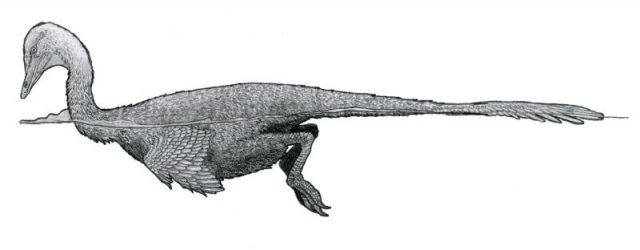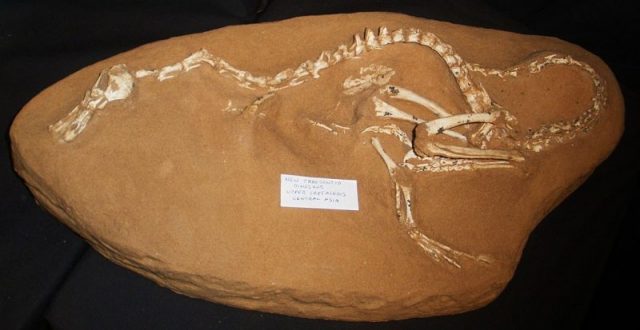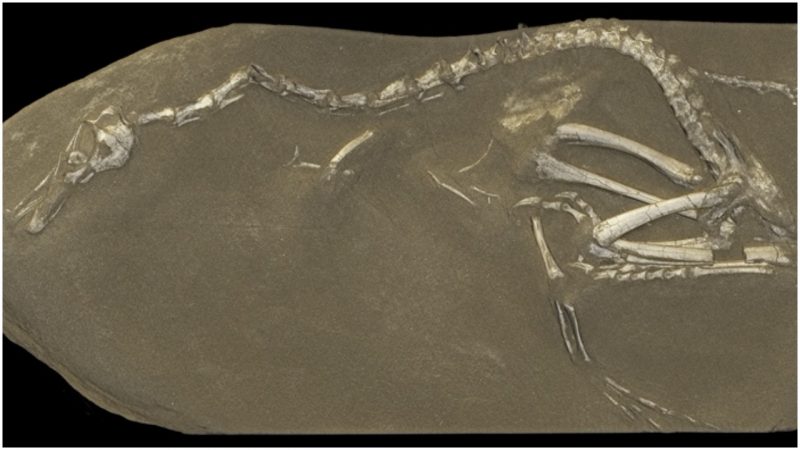Of all the dinosaurs that once roamed the Earth, one of the most bizarre-looking ones is assuredly Halszkaraptor escuilliei. This extraordinary dinosaur recently made headlines because of its swan-like neck and amphibious flippers, among other bodily features. It was probably able to move like a duck, as well as to swim as if it were a penguin. It thrived on earth roughly between 71 and 75 million years ago, in the late Cretaceous period.
For a certain amount of time, before the fossils of the Halszkaraptor escuilliei ended up in the hands of scientists, the remains were circulating on the black market, which raised concerns over whether the specimen was authentic or some sort of fabrication. However, as the fossils were retrieved from the black-market networks, scientists have been able to carry out more in-depth research and perform high-resolution scanning to finally affirm that this was indeed a unique semi-aquatic dinosaur.
For things to be all the stranger, it was discovered that Halszkaraptor escuilliei belonged to the bipedal and famed group of meat-eating dinosaurs, the theropods, a sub-species of which includes the infamous Tyrannosaurus Rex. From what we also know so far, it was not common for theropods to spend too much time in the water, but the Halszkaraptor escuilliei probably did well swimming with its flipper-looking arms. According to the researchers, its extended neck certainly helped the creature in its quest for provisions and fish hunting.
“What is very special about it is that it looks very weird. It doesn’t look like any other dinosaur that we know so far,” said Vincent Fernandez, a co-author of the research study, in summing up the findings of this strange newfound dinosaur; the study itself was published in December 2017 in the journal Nature.

Fernandez, who is a paleontologist at the French-based European Synchrotron Radiation Facility, has also remarked that the dinosaur’s claws would have helped the animal while on land, while the other bodily features would have supported it in the water and while hunting. The synchrotron scanning performed on the specimen revealed that the swan-like dinosaur has a greater number of teeth than any other dinosaur. According to Fernandez, the shape of the teeth is also “very unusual.” He said that the analysis of the teeth “was the first evidence of the amphibious lifestyle, because really they look like crocodile teeth …”
While the dinosaur itself is strange-looking enough, what is also strange is how it arrived in the hands of researchers. Reportedly, poachers dug up the remains not too many years ago. They probably unearthed the fossil in southern Mongolia, in the region known as the Djadochta Formation. Following its excavation, part of the fossil being embedded in rock, it had been smuggled out of Mongolia, possibly destined to reach European fossil markets via China.
As National Geographic notes, the territory of Mongolia was once the home of more than 5 percent of all known dinosaur species. Regardless of the fact that officials in this Asian country have introduced laws to protect fossils from illegal exports, for many years such trade has continued.

Part of the reason why Mongolian law enforcement is unsuccessful is due to the vastness of the country and the fact that many sites for digging are located in remote realms. That has come in handy for poachers who have found fossils to be a precious source of income for many, many decades, at the cost of ruining both excavation locations and authentic specimens.
Philip Currie from the University of Alberta, another paleontologist and co-author of the study, commented: “We were seeing specimens basically destroyed by people who had no sympathy for the scientific value of these specimens, let alone the display value or attracting tourism.”
After spending some years in the shadows of the black market, the fossil of Halszkaraptor escuilliei still had the good fortunes to reach scientists. There is an insufficient amount of information of what had happened to it before arriving in the labs, but it is considered that, for a while, the remains rested in the possession of private collectors after they were conveyed from Mongolia.
It was its most current owner, fossil collector François Escuillié, who returned the remains of the dinosaur to its country of origin, after which paleontologists initially did checkups to see whether the fossil was possibly a fraud. As soon as the specimen was confirmed to be authentic, paleontologists proceeded with conducting hi-resolution scans and research.
The name Halszkaraptor escuilliei was chosen to honor the late Polish paleontologist Halszka Osmólska, who had dedicated her life to researching Mongolian dinosaurs, as well as the person who had the fossil returned to Mongolia, Escuillié. Research study authors say that additional study is needed to understand more about this newly found dinosaur and its family.
